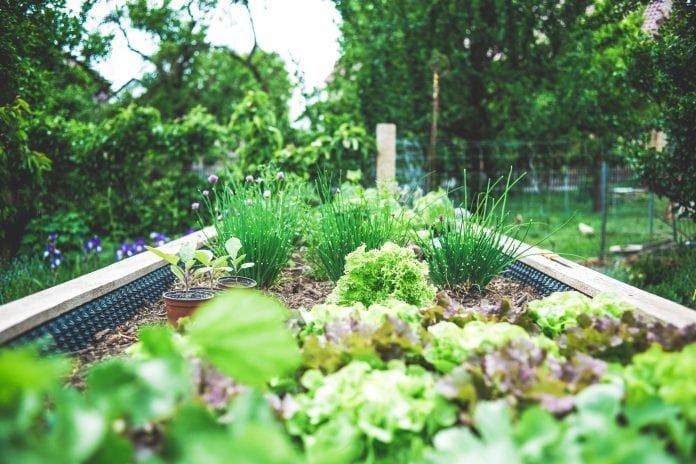Last Updated on June 3, 2025 by Nasir Hanif
There are many reasons why someone would take up gardening. Whether you heard that it can help relieve stress, you’re looking for a hobby to pass the time, or you want to ensure you and your family always have fresh produce, gardening is a hobby that comes with many health perks. Moreover, it can also help save the planet thanks to its numerous environmental benefits.
While you can take up gardening even if you live in a small apartment, keep on reading for some essential tips for starting a backyard garden.
Table of Contents
Decide what you want to grow
First of all, you need to decide what you want to grow. Are you looking for something casual that will help you lower your stress levels? In that case, you can opt for a flower garden. On the other hand, if you want to produce plenty of produce for your family, you can go for a fruit and veggie garden. Moreover, don’t forget about all sorts of herbs that you can grow. When choosing which varieties to plant, you want to take into consideration your preferences. There is no need to grow potatoes if that is not something that your family eats on a regular basis. Finally, keep in mind that some plants simply might not be suited to your region.
Pick the right spot
Once you know what you will be planting, you need to do some research to ensure you can provide your plants with everything they need. With that in mind, you want to look into how much sunlight each plant needs on a daily basis. Edible vegetables typically require at least 6 hours of daily sun. But if you cannot provide them with full sun, don’t worry. Some veggies can grow in partial shade, so you can opt for broccoli, beets, cauliflower, kale, beans, and peas. Furthermore, you have to think about how easy it will be for you to access them when you have to care for them.
Read More: Arlington tree experts for backyard gardening
Test your soil
Before you start planting, you also want to see what kind of soil you are working with. Is it acidic, alkaline, or neutral? Does it have a good amount of all the necessary nutrients? Is it clay, sand, or a mix of types? By having your soil tested, you can find out about all of these aspects. You can either look for a home test kit or take a sample to the local nursery. When you get your results, you will know whether you need to amend the soil in order to meet all the requirements that the plants have.
Equip yourself with the right tools
To ensure your gardening endeavors are successful, you also want to equip yourself with the right tools. When purchasing these, you want to opt for quality metal tools that will last you a long time. Moreover, you want the right size that will reduce the risk of an injury. Whether you go to the local garden center or order online, you want to get a garden hoe and a scuffle hoe, a leaf rake and a dirt rake, a garden shovel, and various hand tools like a hand trowel, a garden fork, and a garden knife. Other essentials include a quality garden hose, a sturdy wheelbarrow, gardening gloves, and knee pads as you will probably spend a lot of time on the ground. In time, you can expand your arsenal to include various other tools that will make it all easier.
Look into companion planting
As you want to make the most of your garden, you should look into some planting practices. One that can be very beneficial is certainly companion planting. If you plant specific plants near each other, they can keep pests away and even increase soil nutrients. For instance, you can place tomatoes near basil, celery, carrots, parsley, spinach, and asparagus. On the other hand, keep it away from dill, peas, beets, and cabbage. What is more, other plants you can grow together include beans and corn, peppers and onions, lettuce and broccoli, and so on.
Learn best watering practices
In addition to best planting practices, you should also learn when and how to water your plants. To begin with, plants require around an inch of water on a weekly basis during the growing season. In case there was no rain recently, you want to provide your plants with enough water. If the first two inches of the soil feel dry, it’s time to water it. Keep in mind that most plants prefer being dry over sopping wet. If you make the soil soggy, you could be faced with root rot. To prevent the soil from getting too wet, you need to ensure you have well-draining soil. Luckily, there are several methods how you can improve the drainage of your garden.
Use fertilizer
Something else that you cannot overlook if you want a successful garden is fertilizer. There are all sorts of fertilizers available but you might want to stick to organic gardening. In that case, look for a label that will ensure you are not putting any harsh chemicals into the soil. If you opt for organic fertilizer, the soil’s structure can also be improved as it increases fungal and bacterial activity. Moreover, it will allow more air to reach the roots and permit the soil to hold water for longer periods of time. However, keep in mind that organic fertilizers are slow-releasing, which means that nutrients are not immediately available to the plants. If you need something to work fast, you should look into inorganic fertilizers.
Start your own compost
Maybe you are thinking about starting your own compost in addition to the garden. You’ll be glad to hear that this process is not at all difficult; it can just take some time. By putting all your kitchen scraps and leftovers into your compost bin, you are not only minimizing your waste but you are also creating food for your own plants. While everything including veggie peelings, tea bags, and non-glossy paper can be used, you should not put meat, bones, and milk into your compost. Furthermore, all dead leaves, grass clippings, wood chips, sawdust, and other things you can find in the garden can also go into compost.
Deal with weeds and pests
Don’t be surprised if you find pests and weeds in your garden – it’s only natural that they will appear sooner or later. In terms of weeds, you should pull them out by hand or with a scuffle hoe as soon as possible. You can also look into pre-emergent herbicides that will prevent the weeds from appearing. On the other hand, when it comes to pests, you can also use chemical pesticides. But if you’d rather steer clear of various chemicals and keep it organic, there are many natural ways to keep pests away. For example, by attracting harmful species’ natural predators, they will be forced to stay away. Try attracting ladybugs as they are capable of consuming around 50 aphids a day.
Finally, all that is left for you to do is know when to harvest each plant and do it on time. Even if some of your crops are not successful on the first try, don’t give up and give it another go. In time, you will learn all the best practices and ensure this hobby is both fun and useful.
Apart from this, if you are interested to know more about Head posture forward and cervical pain and spondylosis then visit our Health category.
















